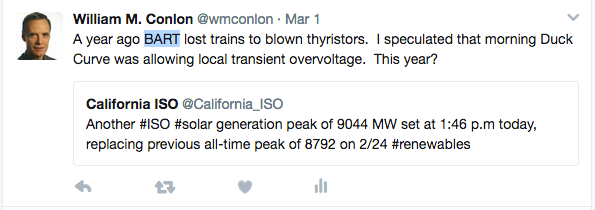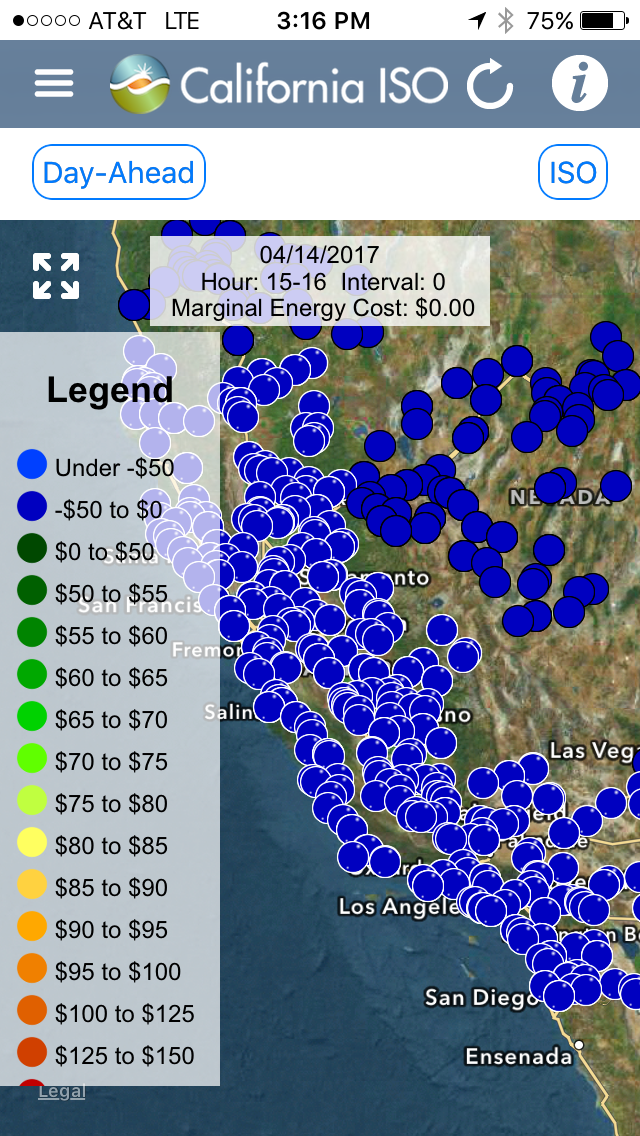A year ago on LinkedIn I was curious about the coincidence of over-generation challenge of the CAISO Duck Curve with the thyristor failures on BART trains. I speculated further on Facebook, writing on 18 March 2016:
I am going out on a limb here, and laying the blame for BART’s recent equipment failures on renewable generation. At the transmission system system level, there have been concerns about the ‘Duck Curve’ and over-generation causing voltage and frequency excursions. And the same overgeneration issue occurs at the distribution system.
The Duck Curve problem is particularly severe in the spring, when large amounts of solar generation come on line, but the system load is relatively low. The problem is exacerbated in the morning, as the sun first comes up, and the CA Independent System Operator already has to run pumps to absorb excess power.
So I speculate that the combination of old thyristors, at the end of their life, combined with voltage excursions and harmonic distortion of the AC waveform by the DC inverters connecting the photovoltaic panels to the grid, is inducing failures.
Hopefully we will get some answers soon, but you don’t want to be a BART commuter right now.
This year, as the spring over-generation maximum approached, I was curious about a recurrence:

Well the problem reportedly came back yesterday, resulting in train cancellations as noted in this news article. This problem coincided with an amazing day on the California grid — so much renewable generation that prices were zero in the Day Ahead Market and there were negative Locational Marginal Prices at every node in the state!
This shows the clear need for energy storage on the grid, and bodes well for Pintail Power‘s Liquid Air Power & Storage (LAPS) approach. But just as important as storage, is the clear need for the reactive characteristics that can assure transient voltage stability. Perhaps the power electronics used for photovoltaic generation and battery energy storage systems will be upgraded to provide the needed reactance. But the LAPS systems can already provide this capability using rotating electrical machinery — the motor driven compressor train for charging and the generators for discharging.
I think this bodes well for our business of supplying low carbon dispatchable power to solve the Duck Curve.
